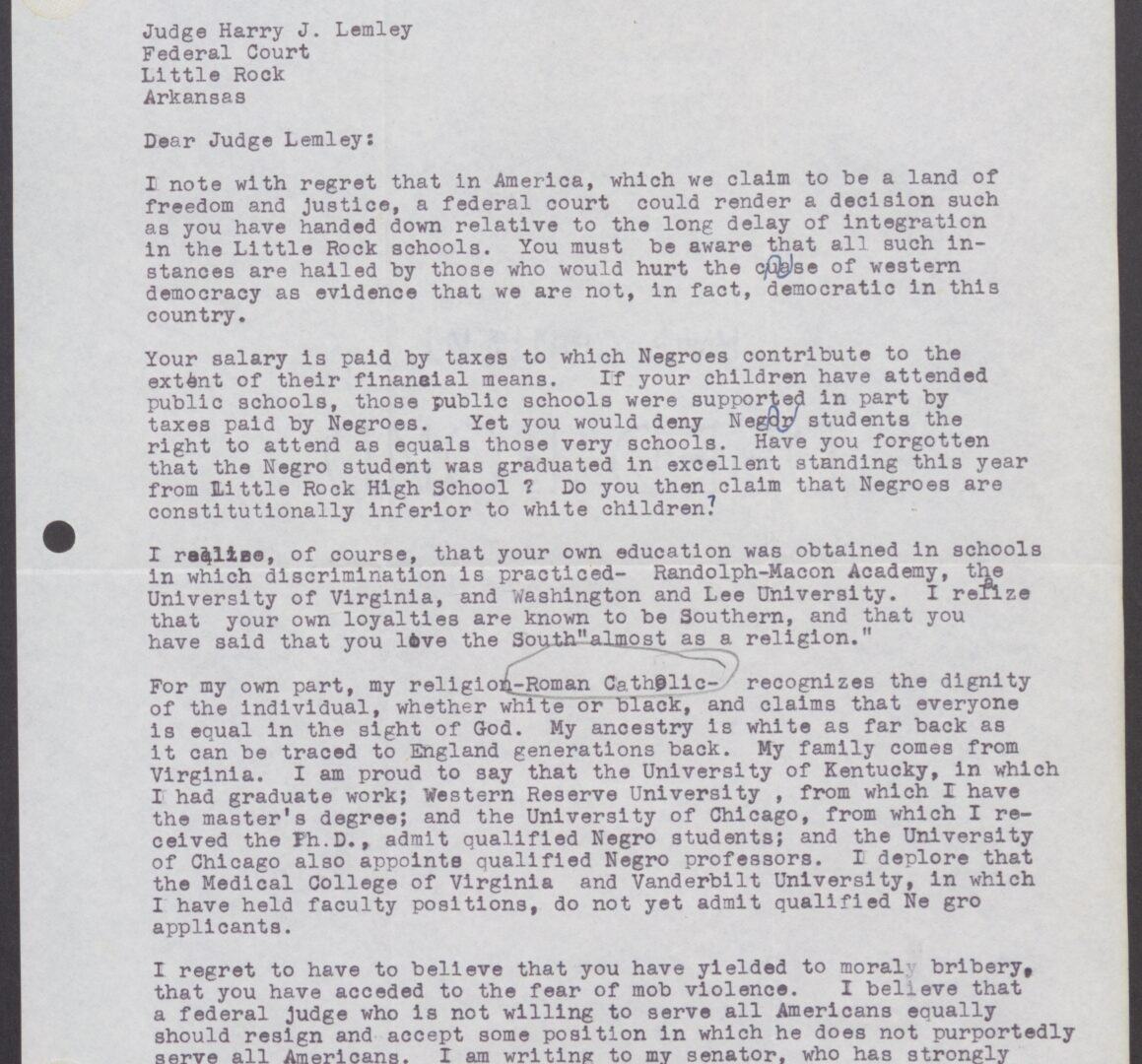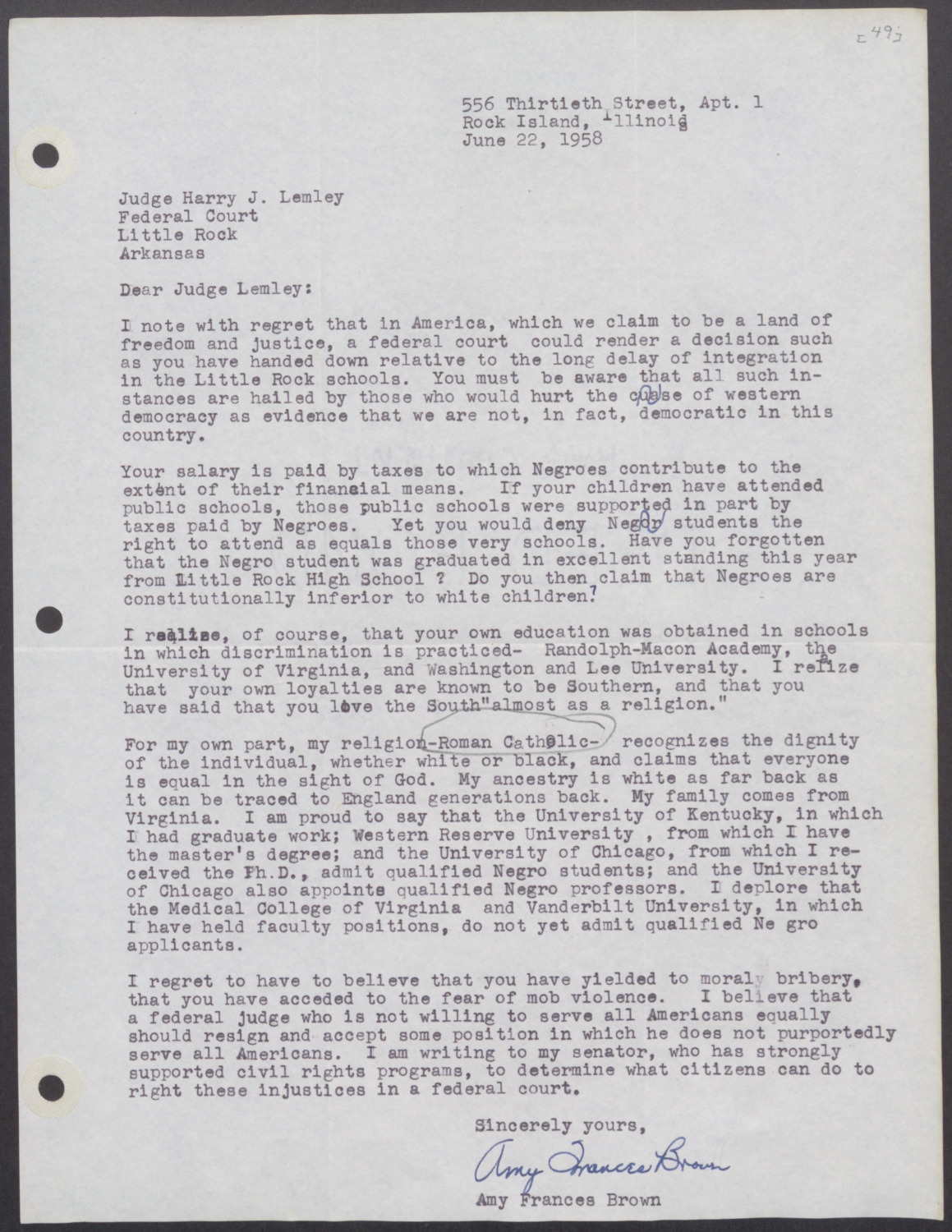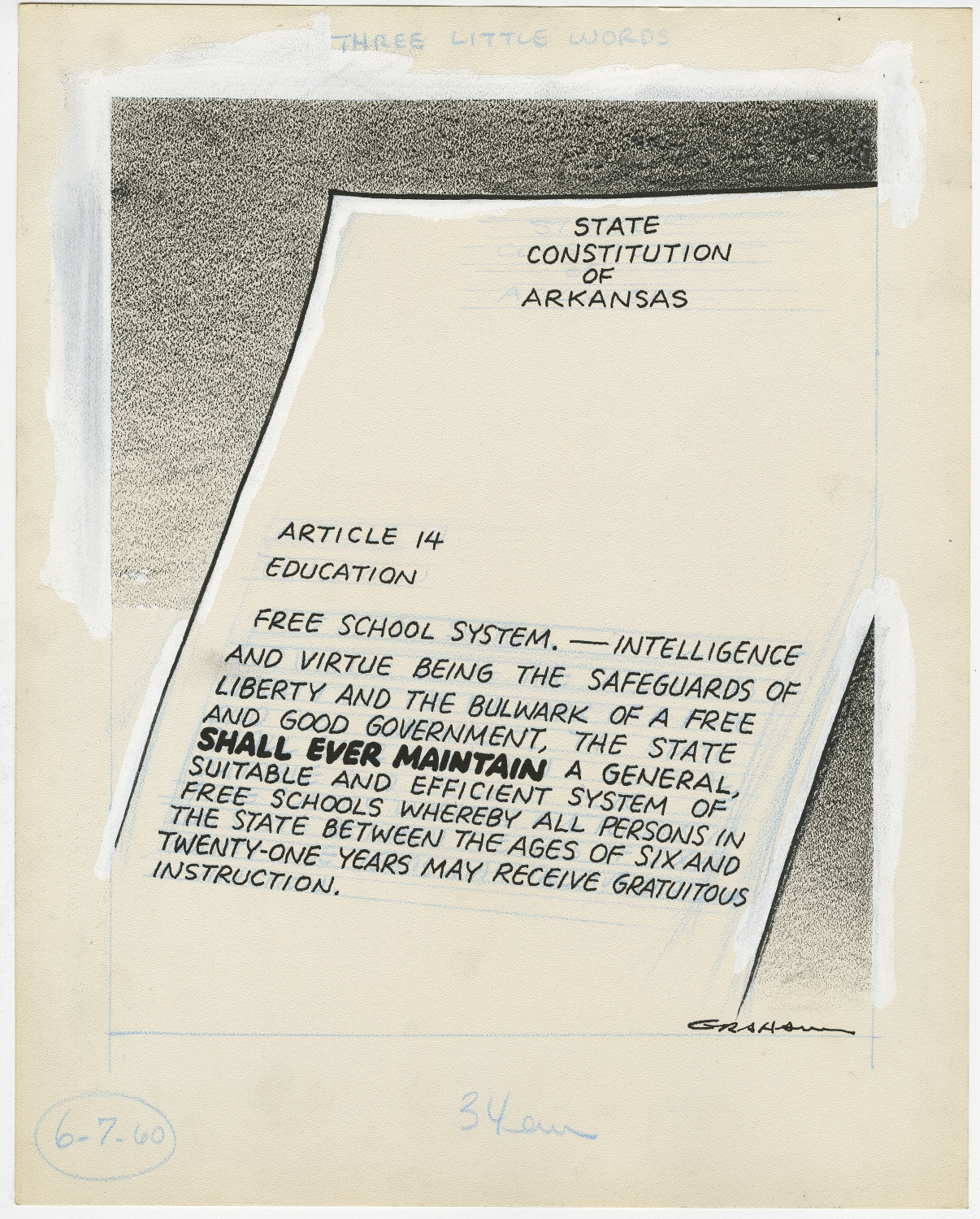Introduction
In 1955, following Brown v. Board of Education, the Little Rock school board accepted a plan of gradual integration presented by superintendent Virgil Blossom. According to the plan, Little Rock schools were to begin the integration process in the fall of 1957. However, when nine African American students enrolled in Central High appeared in front of their new school on September 4, 1957, they were met by a white angry mob and the Arkansas National Guard. Governor of Arkansas Orval Faubus called the latter not to protect the black students’ constitutional right to an equal education but to block them from entering the school building. In response to this violation of federal laws, President Dwight Eisenhower federalized the Arkansas National Guard and ordered them to support the integration and protect the African American students. The students are known today as the Little Rock Nine.
Although after Eisenhower’s intervention the Little Rock Nine could enter the school, the crisis was far from over. One outcome of the events was a petition that the Board of Directors and the Superintendent of Schools filed in 1958. The petition requested that the school integration in Little Rock would be suspended until January 1961. United States District Judge for the Eastern and Western Districts of Arkansas Harry J. Lemley approved the request in June 1958.
Lemley’s decision was reversed by the Court of Appeals in August 1958. In September 1958, the Supreme Court of the United States confirmed the reversal by issuing a landmark decision, Cooper v. Aaron, which denied the Arkansas School Board the right to delay desegregation. Although Lemley’s decision to permit the delay was thus short-lived, it made headlines across the United States and all over the world. In this activity, you will examine a letter that Judge Lemley received after his decision to delay school integration in Little Rock was announced and a 1960 political cartoon by Bill Graham.
Activity Questions
- Who wrote this letter? Where did the letter’s author live? Why do you think someone who did not live in Arkansas decided to write to Lemley?
- What does the letter’s author think about how Lemley’s decision reflects on the state of American democracy?
- Why do you think the letter’s author reminds Lemley that black Americans pay taxes? How does the issue of taxation connect to the American tradition of fighting for justice and freedom?
- What does the letter’s author mean when she argues that Lemley’s “loyalties are known to be Southern”?
- What do we learn about the letter’s author? How does her own background shape her understanding of Lemley’s decision?
- Why does the letter’s author suggest that Lemley should resign as a federal judge? Do you agree with her argument?
- Why do you think the letter’s author refers to the popular claim that the United States is ”a land of freedom and justice”? How do you understand this phrase? How do you understand this phrase in the context of the civil rights struggle?
- Examine this cartoon. What does it depict?
- Have you ever seen cartoons in newspapers, magazines, or online? How is this cartoon different from typical cartoons?
- What kind of message do you think the author wanted to send through this cartoon?
- When was this cartoon created? Check again three other dates: when the Supreme Court issued the Brown v. Board of Education decision; when the Little Rock Crisis began; and when the letter you just read was written. What do all these dates tell you about civil rights struggles in Arkansas?
Primary Sources
To learn more about the primary sources featured in the activities above, click the following links:
Arkansas Social Studies Standards
US History Since 1890, Grades 9 – 12
- Strand: Era 9: Post-war United States 1945 to Early 1970s
- Content Standard 5: Students will analyze social, economic, and political changes in the United States between 1945 and 1970.
- Era9.6.USH.1 Analyze the roles of individuals, groups, and the government in securing civil rights during the mid-20th century using a variety of primary and secondary sources (e.g., minorities, women, NAACP, federal court cases, legislation, Twenty-fourth Amendment)
- Era9.6.USH.4 Examine domestic policies of the federal government between 1945 and 1970 and the outcomes from multiple perspectives (e.g., New Frontier, Great Society, civil rights, social issues)
- Era9.6.USH.5 Construct historical arguments of long-term effects of social and economic changes occurring during the mid-20th century using available data and multiple sources
African American History, Grades 9 – 12
- Strand: Illusion of Equality 1950-1970
- Content Standard 6: Students will analyze the African American experience from 1950-1970.
- IE.6.AAH.1 Analyze the various influences of African Americans on political change during the mid-1900s using primary and secondary sources (e.g., feminism, civil rights organizations, political organizations, and labor unions, military)
- IE.6.AAH.2 Examine the various influences of African Americans on social change using primary and secondary sources from multiple perspectives (e.g., migration, feminism, military, social organizations)
- IE.6.AAH.4 Analyze the effects of legislative developments on the African American experience between 1950-1970 (e.g., voting, civil rights, fair housing, education, employment, affirmative action)
Arkansas History, Grades 7 – 8
- Strand: History Content Standard 7: Students will examine the impact of historical events and people on the development of Arkansas.
- H.7.AH.7-8.8 Analyze social, economic, and political effects of the Civil Rights Movement on various regions in Arkansas from multiple perspectives (e.g., integration, state legislation)
Arkansas History, Grades 9 -12
- Strand: Era 5: World War II Through the Civil Rights Era 1941-1967
- Content Standard 5: Students will analyze factors that influenced the perspectives of Arkansans from World War II through the Civil Rights Era.
- Era5.5.AH.9-12.4 Analyze the social, economic, and political effects of the Civil Rights Movement in various regions of Arkansas using primary and secondary sources from multiple perspectives (e.g., segregation; voting; integration of Fayetteville, Hoxie, and Little Rock School Districts; federal and state legislation)
Key Terms
Downloadable Guides and Handouts
We encourage K-12 educators to use History Alive: Virtually! in a way that will best match their classroom needs. The “Exercise” handout includes a complete exercise as featured on this website, the “Primary Sources” handout includes only primary sources used in the exercise, and the “Questions” handout includes analytical questions from the exercise but is editable and can be easily changed to best match students’ needs.
“A Land of Freedom and Justice” – Exercises



